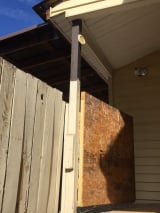How to Whitewash
Whitewashing is a straightforward process that can be done by anyone with basic painting skills. Here are the steps to achieve a beautiful whitewashed finish.
Surface Preparation
Before applying white wash paint, it is essential to prepare the surface. This involves cleaning and priming the area to ensure the whitewash adheres properly.
▪️ Cleaning
Start by thoroughly cleaning the surface to remove any dirt, dust, or grease. Use a mild detergent and water for interior surfaces and a power washer for exteriors. Allow the surface to dry completely before proceeding.
▪️ Priming
Priming is not always necessary, but it can help the whitewash adhere better, especially on previously painted or glossy surfaces. Use a primer suitable for the surface you are working on and allow it to dry according to the manufacturer's instructions.
Mixing the Whitewash
To mix the whitewash, you will need slaked lime, water, and optional additives like salt or pigments. Here is a basic recipe for traditional whitewash:
▪️ 5 pounds of slaked lime
▪️ 1 gallon of water
▪️ 1 cup of salt (optional, for added durability)
Mix the ingredients thoroughly in a large bucket until you achieve a smooth, creamy consistency. For lime wash, you can add pigments to achieve the desired color.
Applying the Whitewash
Apply the whitewash using a brush, roller, or sprayer, depending on the size and type of surface. For walls and ceilings, a brush or roller works best. For large exterior surfaces, a sprayer can save time and effort.
▪️ Brush Application
Dip the brush into the whitewash mixture and apply it to the surface using long, even strokes. Work in small sections, blending as you go to avoid visible brush marks.
▪️ Roller Application
Use a medium-nap roller for whitewashing walls and ceilings. Roll the whitewash onto the surface in a W pattern, then fill in the gaps with even strokes. This technique ensures a uniform finish.
▪️ Sprayer Application
When using a sprayer, keep the nozzle at a consistent distance from the surface and apply the whitewash in thin, even layers. Allow each layer to dry before applying the next to avoid drips and runs.
▪️ Finishing Touches
Once the whitewash is dry, you can add finishing touches to enhance the look. This can include distressing the surface for a more aged appearance or applying a sealant for added protection.




